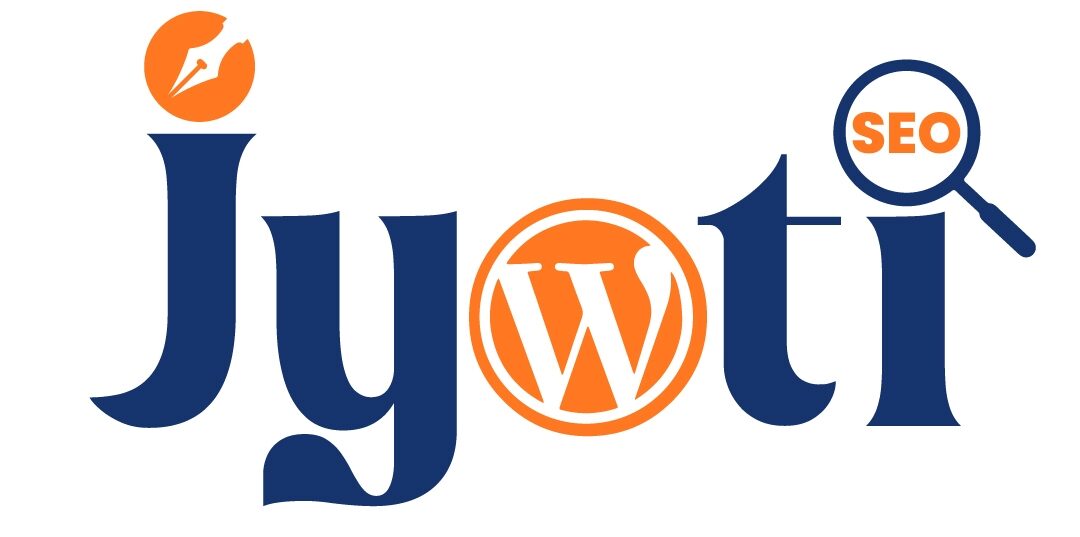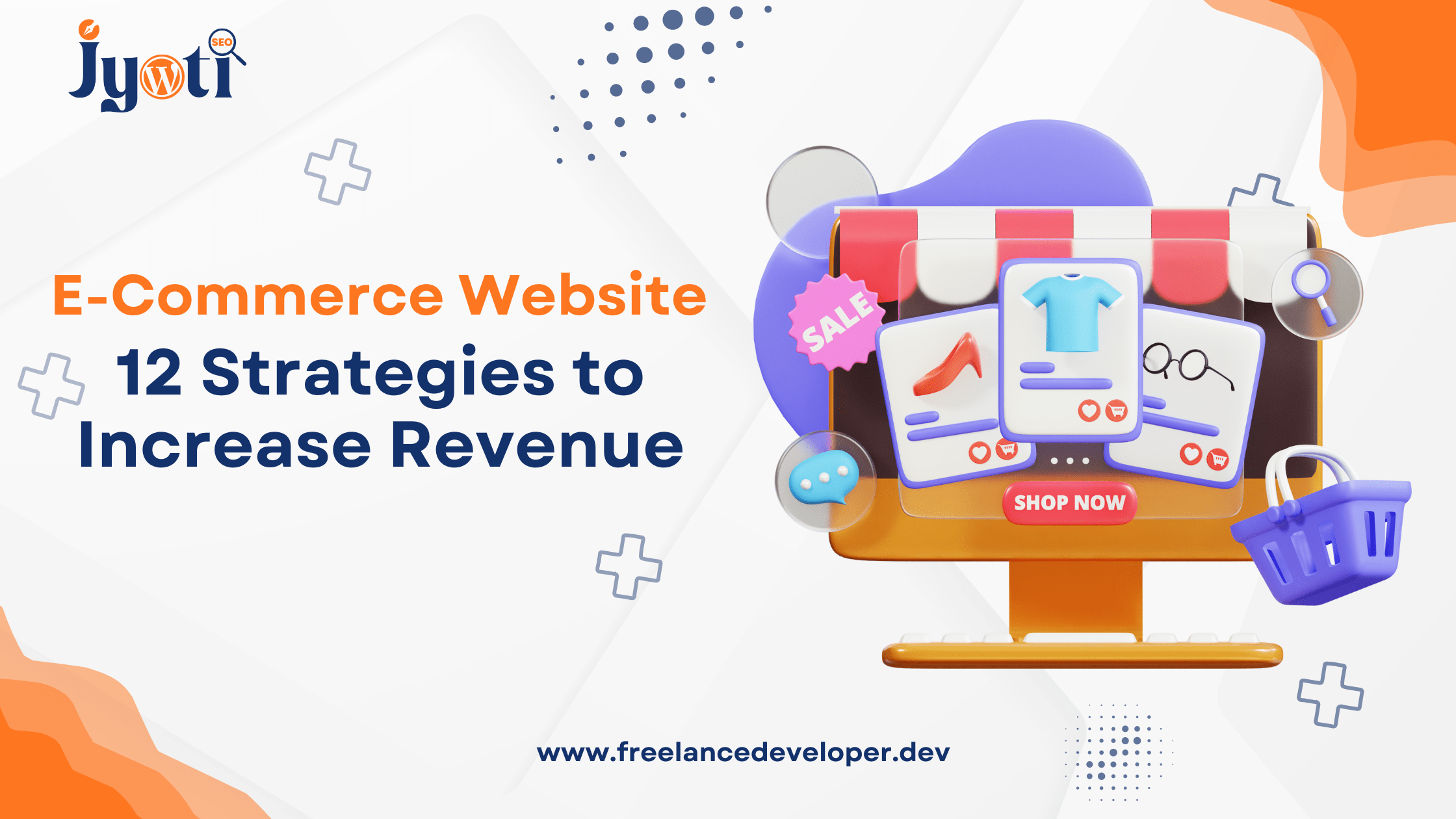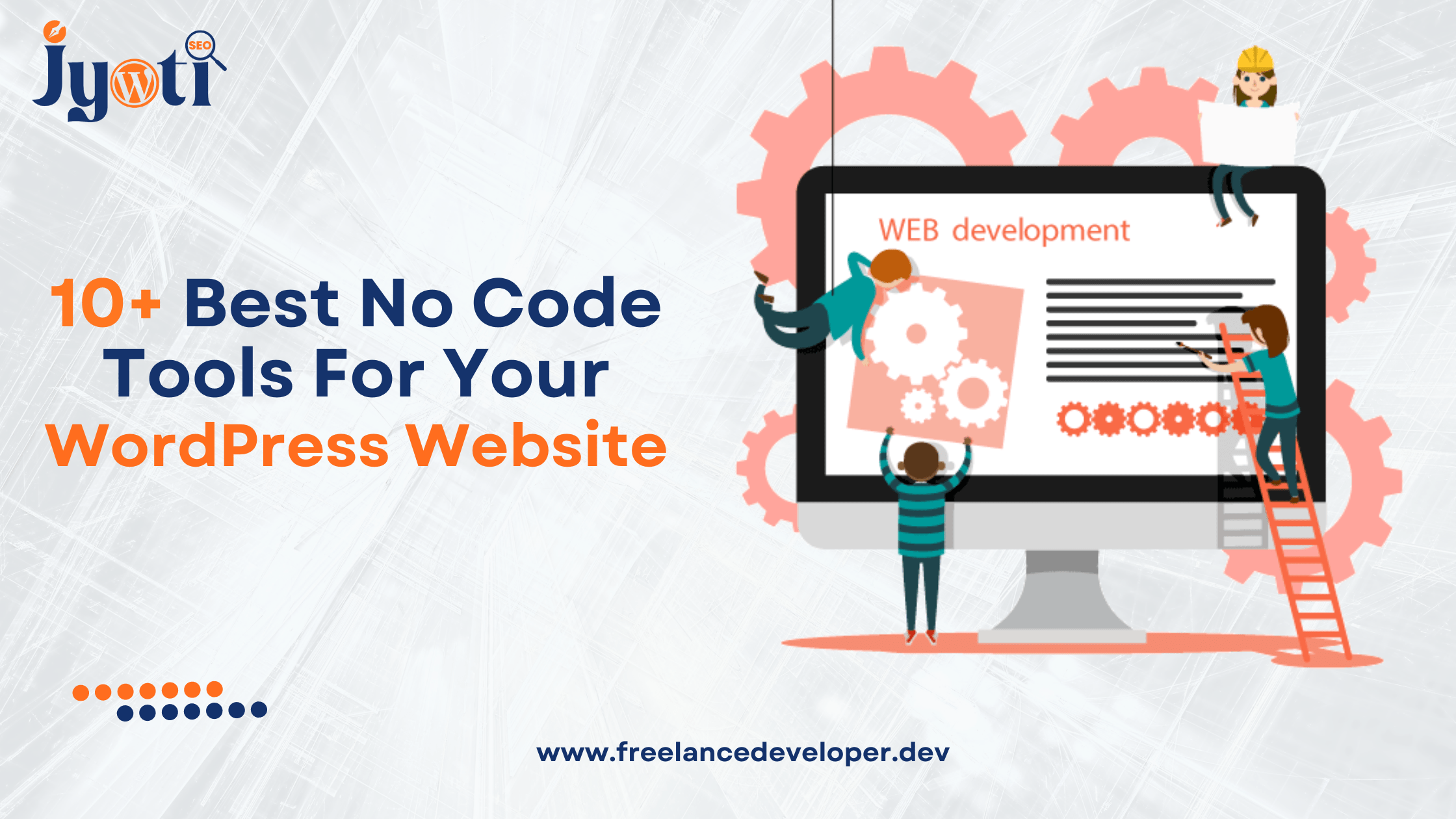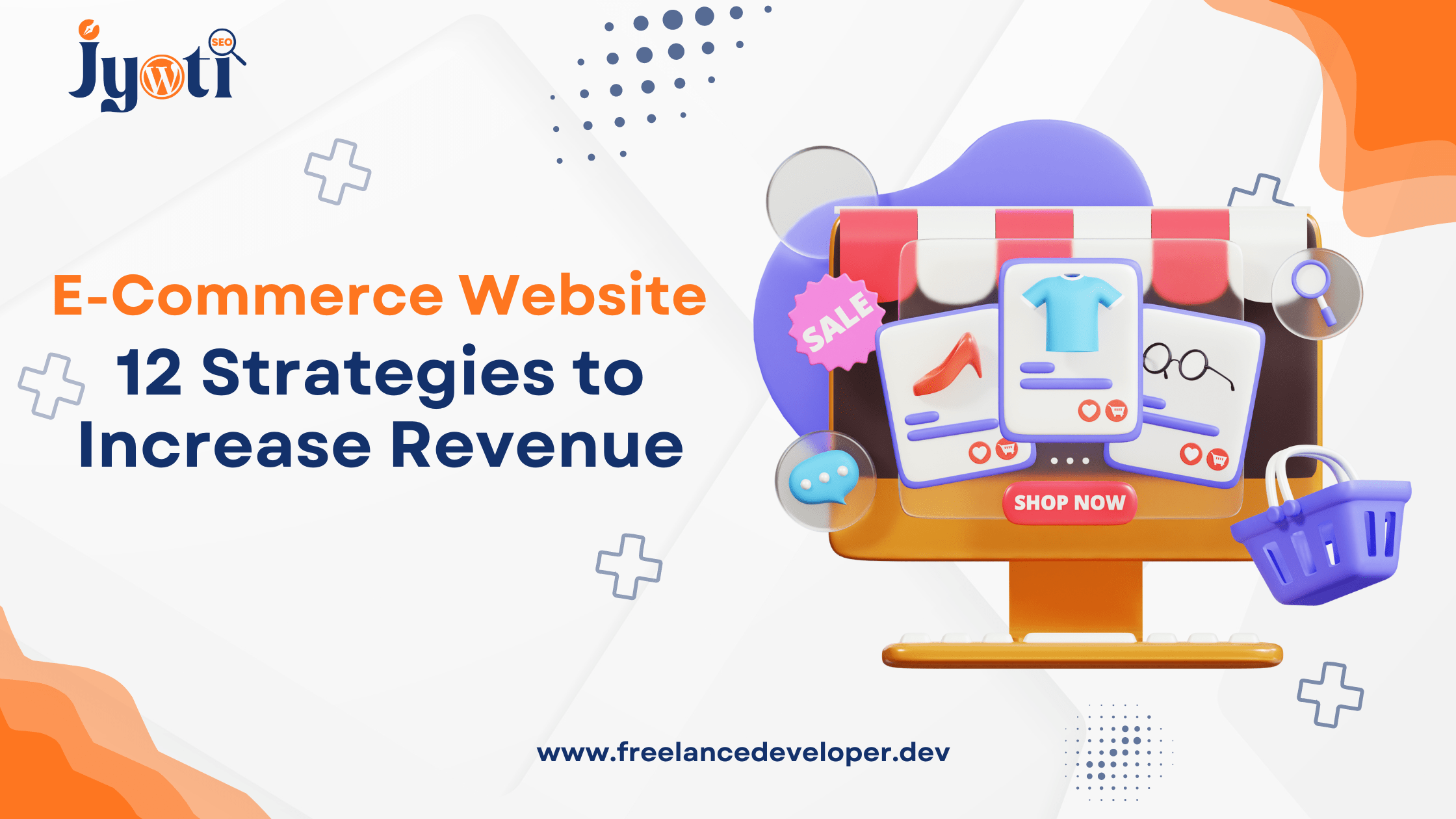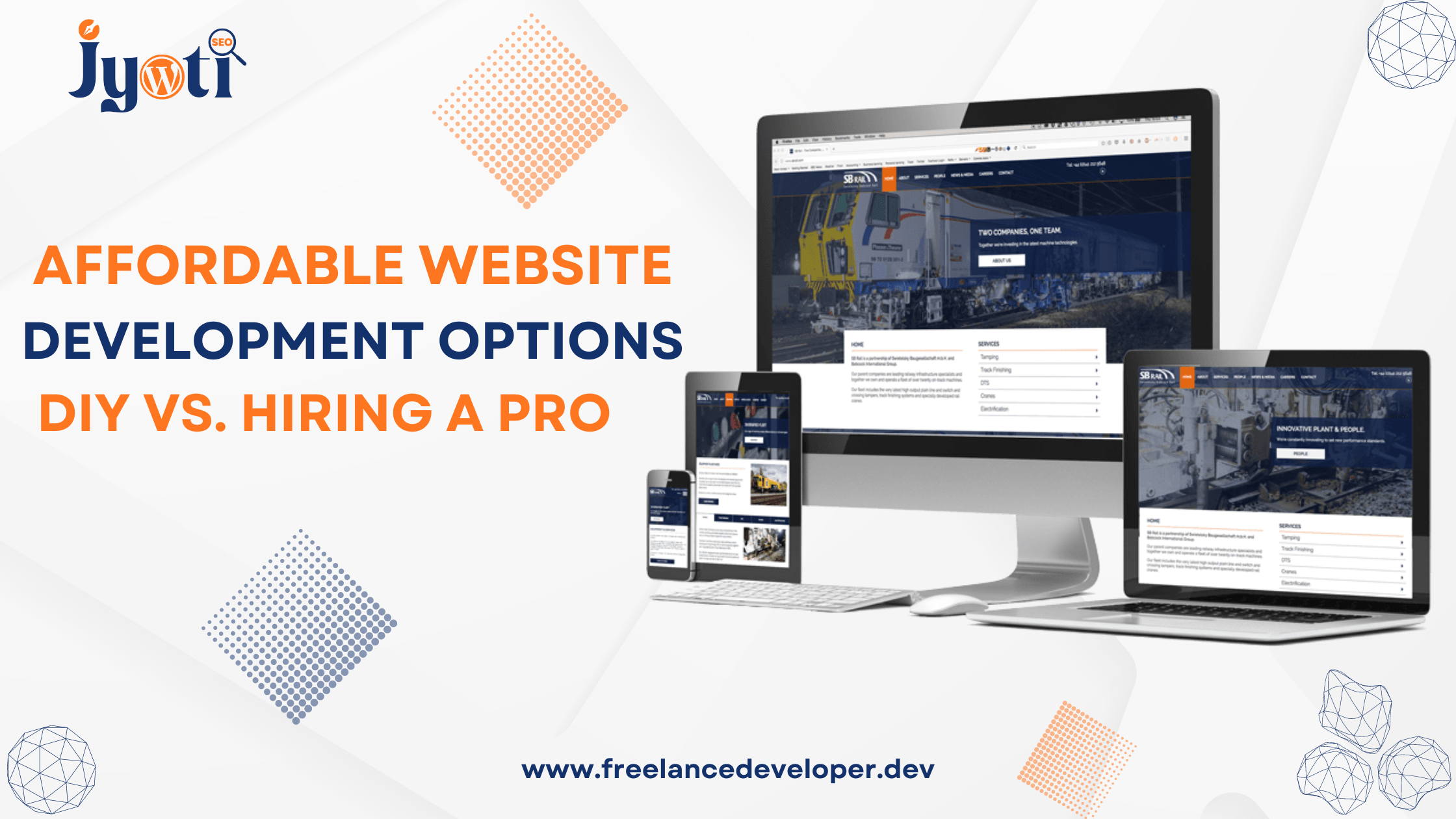Making your e-commerce website better is all about making more money.
Thankfully, there are lots of ways to do this, like getting more people to visit your site, convincing more of them to buy stuff (we call this conversion rate optimization), and making each sale worth more( that’s the average order value).
In this blog, we’ll talk about 12 ways to make your website better so you can make more money with your online business. If you follow these tips, you’ll get more people to visit your site, more of them will buy things and you’ll end up making more money and profit.
1. Find the Right Keyword
Keyword research is about understanding how people search for what you offer online. It helps you optimize your website to rank higher in search engines (SEO) and get more visitors.
To start, you need to find out which keyword people use. For example, if you sell Shoes, they might search for “sneaker” or “running shoes.”
You can use tools like Google Keyword Planner to discover these keywords. It’s free and easy to use. Just type in your main keywords and it’ll suggest related terms people search for. This helps to target the right keywords to improve your website’s SEO and attract more customers.
2. Boost SEO with On-Page Optimization
To enhance your e-commerce website SEO focus on On-Page Optimization. This means strategically using keywords in key areas.
- Title: Make sure your page title includes your main keywords.
- Headings: Use your target keyword in main and subheadings.
- Meta Description: Include your keywords in the meta description.
- Body Copy: Incorporate the keyword naturally into your main text and product descriptions.
For Instance, if you are aiming for “sneakers,” use these keywords on your page.
To simplify this process and generate effective meta and product descriptions, try the e-commerce booster app, which also assists with keyword identification, all images, and image quality improvement.
But remember, this is just the beginning. Advanced On-Page and technical SEO practices are essential, along with broader strategies like:
- Structuring your website effectively.
- Technical SEO Improvements.
- Content Marketing efforts.
- Building backlinks to boost your site’s authority.
3. Improve Product Page Layout:
If you want more people to buy your stuff when they visit your website. You need to make sure your product page looks really good.
For example, let’s say 10 out of every 100 people who visit your product page end up buying something. If you can make it so that 12 out of every 100 people buy something instead, that means you’ll sell 20 more items every week.
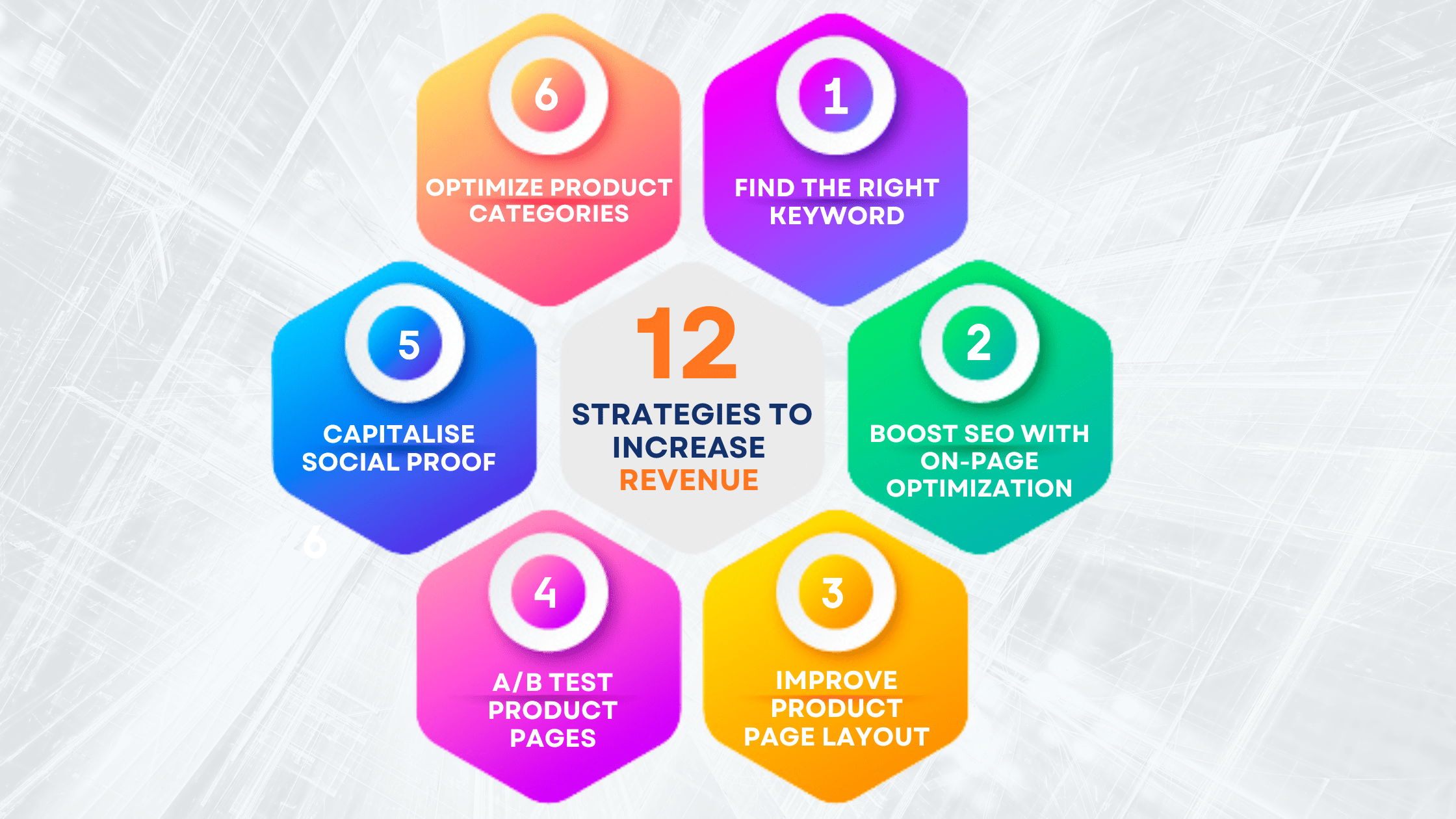
4. A/B Test Product Pages
Imagine you have an online business where you sell shoes. You have a product page for a particular type of sneakers. Now, let’s say you are not sure if the current design of that product page is the best it can be for selling those shoes. That is where A/B testing came in.
A/B Testing is like an experiment you do on your website. Here’s how it works:
- You take your product page (let’s call on this version) just as it is and make a copy of it.
- Now, you change something on the copied page, maybe the color of the “Buy Now” Button, or the size of the product image.
- Then, you show these two versions of the product page to different groups of people visiting your website. Half of them see Version A, and the other half see Version B.
- After some time, you look at the data to see which version of the page led to more people actually buying the shoes. If Version B resulted in more sales, then you know that the change you made (like the button color or image size) might be more effective in convincing people to buy.
For example, let’s say you changed the colour of the “Buy Now” button on Version B to bright red. After running the test, you find out that more people bought the shoes when they saw Version B with the red button compared to Version A with the original button colour. This tells you that the red button might be more eye-catching or persuasive, so you might decide to keep it that way on your product page.
A/B testing helps you figure out what works best for your customers and can lead to improvements that increase sales on your website. It’s like trying out different recipes to see which one tastes the best—except in this case, you’re cooking up the best way to sell your products online!
5. Capitalize Social Proof
Capitalizing on social proof means showing potential customers that others have had positive experiences with your products or services. For instance, you can display reviews or testimonials from satisfied buyers on your website. When people see these, they’re more likely to trust your brand and make a purchase. Imagine you’re buying a new phone online. If you see lots of positive reviews from other buyers saying how great the phone is, you’ll feel more confident about buying it. So, by using social proof, you can convince more people to choose your products or services.
Social Proof Consists of:
- Customer Reviews
- Testimonials
- Quotes
- Data or Case studies
- Social Media Endorsements
These stories and feedback strengthen your marketing messages.
6. Optimize Product Categories or Listing Page
To make your online business easier to navigate, organize products into clear categories like “Clothing,” “Electronics,” or “Home Decor.”
For example, if you’re selling shoes, you can have separate sections for “Men’s,” “Women’s,” and “Kids’.” Use subcategories like “Tops,” “Bottoms,” and “Accessories” within each main category. This helps shoppers quickly find what they’re looking for without getting lost. Remember to use descriptive titles and images for each product to make browsing enjoyable and efficient. By optimizing your product categories and listing pages, you’ll make shopping on your website a breeze for customers.
7. Identifying issues to checkout Process
Finding problems during checkout means looking for anything that makes it tricky for customers to buy from your website. It could be things like the page loading slowly, too many steps to finish the order or confusing payment options. Even if there are mistakes in the form fields, like asking for the wrong information, it can turn people away. By spotting and fixing these issues, like making the checkout process smoother and easier to understand, you can help more people buy from your online business.
8. Create Urgency
Creating urgency on your e-commerce website is all about encouraging customers to act quickly. You can do this by using tactics like limited-time offers, countdown timers, or alerts about low stock. When people feel like they might miss out on a great deal, they’re more likely to make a purchase right away. Urgency can help push hesitant buyers to make a decision faster. By creating a sense of urgency, you can increase the chances of turning visitors into customers and boosting your sales. So, make sure to use strategies that create a feeling of urgency to drive more conversions on your site.
Urgency can show up in various ways on your website:
- Limited-time offers
- Flash sales
- Expiring coupons
- Count down timers
- Low-stock indicators
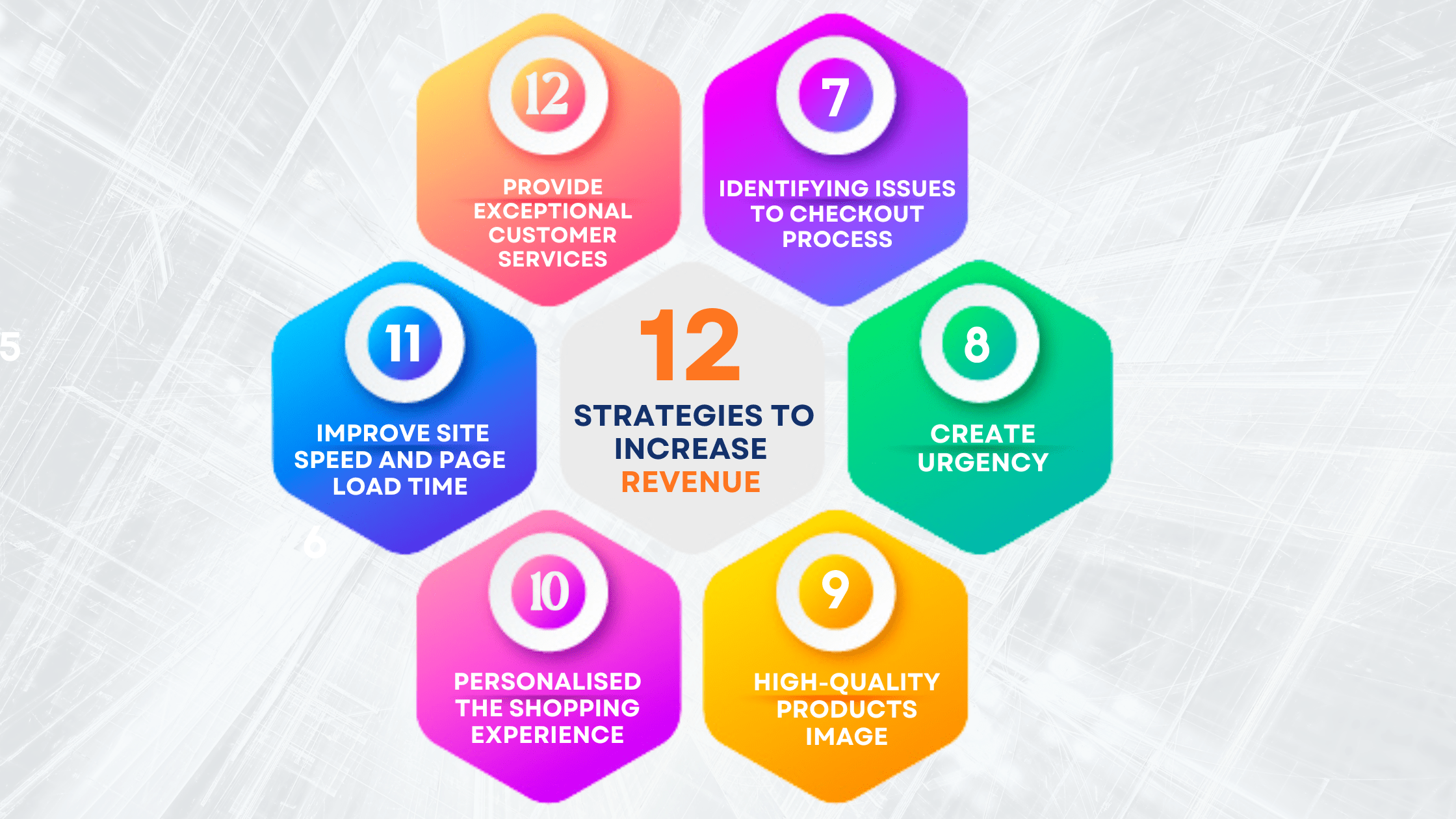
9. Invest in High-Quality Products Image
Investing in high-quality product images is crucial for your online store. Clear and detailed images help customers visualize the product, increasing their confidence to make a purchase. Ensure your images accurately represent the product, showing it from different angles and with zoom functionality. High-quality visuals make your products more appealing and trustworthy, leading to higher conversion rates. They also enhance the overall shopping experience, making it easier for customers to evaluate and compare products. By prioritizing top-notch images, you can effectively showcase your products and stand out in a crowded online marketplace.
10. Personalised the Shopping Experience
Personalizing the shopping experience means tailoring it to each shopper’s preferences and interests. It’s like having a friendly assistant who remembers your favorite things. This could include showing product recommendations based on what you’ve browsed before, sending personalized emails with special offers, or addressing you by name when you visit the website. By personalizing the experience, it feels more special and relevant to you, making you more likely to enjoy shopping and come back again. It’s all about making your online shopping journey feel unique and enjoyable, just like shopping in your favorite store.
11. Improve Site Speed and Page Load Time
Speed up your website by making it load faster. Improve site speed and reduce page load time to keep visitors engaged. Compress images, optimize code, and choose a reliable hosting provider to enhance performance. Faster loading times lead to a better user experience, lower bounce rates, and higher conversions. Prioritize simplicity and efficiency in design to streamline the browsing experience. Regularly monitor site speed and address any issues promptly to ensure optimal performance. By focusing on improving site speed and page load time, you can create a more enjoyable and seamless experience for your website visitors.
12. Provide Exceptional Customer Services
Exceptional customer service means going above and beyond to make your customers happy. It involves being friendly, helpful, and responsive to their needs and concerns. Whether it’s answering questions, solving problems, or offering assistance, your goal is to provide a positive experience at every interaction. This could include offering fast response times, easy-to-reach support channels like live chat or phone, and resolving issues promptly. By prioritizing customer satisfaction and showing genuine care, you can build trust, loyalty, and a strong reputation for your business, leading to repeat sales and positive word-of-mouth referrals.
Conclusion
Optimizing your e-commerce website is essential for driving traffic, increasing conversions, and ultimately boosting revenue. By implementing these 12 strategies, you can create a seamless shopping experience for your customers and achieve success in the competitive e-commerce landscape.
If you’re looking to enhance your e-commerce website development or seeking affordable website development solutions, consider partnering with experienced professionals who understand the intricacies of online business and can tailor solutions to meet your specific needs.
Remember, in the ever-evolving world of e-commerce, staying ahead of the curve with continuous improvement is key to sustaining growth and profitability.
Latest Blogs

As a blog author, I have a strong passion for staying up-to-date with the latest trends and technologies. My expertise lies in WordPress development, SEO optimization, and content writing. Whether you have an idea for a website, I am offering a free consultation call to guide you. I am also available to provide the best SEO and content writing services to boost your online presence.
